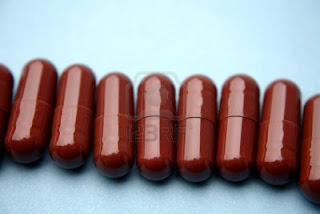BETANOL Tablets: Light yellow, coated tablet; each tablets; contains 50 mg atenolol BP.
BETANOL 100 mg Tablets: Light yellow, coated, circular tablets: each tablets contains 100 mg atenolol BP.
Uses
1. Management of hypertension.
2. Management of angina pectoris.
3. Management of cardiac dysrhythmias.
4. Myocardial infarction: early intervention in the acute phase.
Mode of Action
Atenolol is a beta-adrenoceptor blocking drug which is cardioselective (i.e..,acts preferentially on beta adrenergic receptors in the heart). It is without intrinsic sympathomimetic and membrance stabilising activities. Human studies indicate that it crosses the blood brain barrier only to a negligible extent. It is probably the action of atenolol in reducing cardiac rate and contractility which makes it effective in eliminating or reducing the symptoms of patients with angina. As with other beta-adrenoceptor blocking drugs, its mode of action in the treatment of hypertension is unclear.
Early intervention with atenolol in acute myocardial infarction reduces infarct size and decreases morbidity. Fewer patientswith a threatened infarction progress to frank infarction; the incidence of ventricular arrhythmias is decreased and marked pain relief may result in reduced need of opiate analgesics. Early mortality also may be decreased. Atenolol is an additional treatment to standard coronary care.
Dosage and administration
Adults:
Hypertension: One tablet daily. most patient respond to 100 mg daily given as a single dose. Some patients, however, will respond to 50mg given as a single daily dose. The effect will be fully estabilished after one to two weeks. A further reduction in bloood pressure may be acheved by combining BETANOL wiht other anti-hypertensive agents. Foe example, co-administartion of BETANOL with a diuretic provides a hyghly effective and convenient anti-hypertensive therapy.
Angina: Most patient with angina pectoris will responed to 100 mg given orally once daily or 50 mg twie daily. it is unlikely that additional benefit will be gained by increasing the dose.
Dysrhythmias: Once control of the dysrhythmias is achieved by intravenous injection of beta-adrenoceptor blocking drugs, BETANOL tablets may be given. A suitable oral, maintenance dosage is 50-100 mg daily given as a single dose.
Myocardial Infarction: For patients suitable for treatment with intravenous beta-blockage and presenting within 12 hours of the onest of chest pain. Following slow intravenous injection of a cardio selective beta-adrenoceptor blocking drug, BETANOL 50 mg orally may be given 15 minutes later provided no untoward effects occur from the intravenous dose.
This should be followed by a further 50mg orally 12 hours after the intravenous dose and then 12 hours later by 100 mg orally to be given once daily for up to 10 days . If bradycardia and/or hypotension requiring treatment, or any other untoward effects occur, BETANOL should be discontinued.
Eldrely Patients : Dosage requirements may be reduced especially in patients with impaired renal function.
Children:
There is no pediatric experience with BEANOL and for this reason it is not recommended for use in children.













